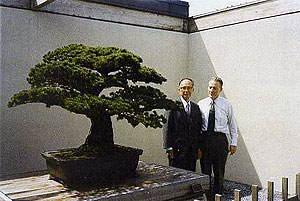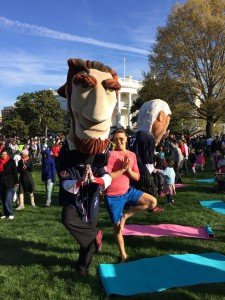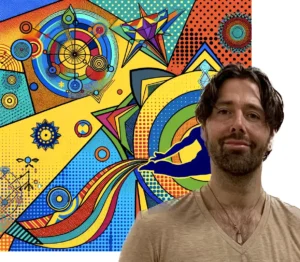Bonsai and the Gita: The Living Art of Letting Go
[quote style=”1″]be intent on action, not on the fruits of action. avoid attachment to the fruits. — (Bhagavad-Gita 2:47)[/quote]

The walls shook, the windows shattered. Each and every family member was sliced by the implosive force of the atomic bomb.
In the back of the Yamaki home was a garden full of exquisite trees. Not cloud piercing orchards full of fruit-bearing blossoms, but a collection of diminutive trees and gardens of cool water-rubbed stone. Some gave a sense of whimsy, the kind of tree and knoll atop which a fairy might read her latest tome, whilst others would look right at home in a forest of their size dissonant kin.
For an island so small to have a wall so tall was one of a number of blessings hidden by the bloody glass trails. Miyajima Island, home to the Yamaki Family, was only two miles from Hiroshima.
Masaru Yamaki’s bonsai garden, like his family, survived the blast. Though seemingly delicate, these storybook trees have a strength that is comparable to that of the family. With more than 75% of their roots being cut away upon potting, a certain understanding of this ancient art form is required by the caretakers. “Bonsai literally means tree in a pot,” says Jack Sustic, the Curator at the National Bonsai & Penjing Museum in Washington. “But you can look around in the collection and see that is much more than just sticking a tree in a pot. It’s an art also.”
What kind of art? For one Japanese white pine from the Yamaki’s collection, it embodies the art of forgiveness. In training since 1625, six generations of the family cared for the tree in Japan. On the United States’ bicentennial this prized pine, dubbed the “Hiroshima Survivor, ” was gifted to the United States.
More than 150 years older than the nation to whom she was gifted, The Hiroshima Survivor now lives at the National Arboritum. So far four curators in the U.S. have cared for it.

It’s looks has changed since it was first delivered to the US. The canopy top you see today displays the vision of the current curators, but the tree’s essence, it’s nature, remains unchanged. “The work on the tree never ends because it is a living art,” Sustic said.
“If you do Bonsai, it begins to change you as a person I believe. It makes you a better person, “ says the National Bonsai Foundation’s director Johann Klodsen. “It teaches you patience and reverence. It certainly has made me a better person.”
The Gita says that you have the right only to your action – not to the fruits thereof and yet, for the bonsai, “the fruit and flowers will not reduce in size.” Sustic said.
A few years after donating the tree, Mr. Yamaki came to visit his old friend. Visiting the tree, he began to openly weep. The curator at the time, concerned that something was wrong, began to console and question the man. As the Voice of America reports it, the translator asked Mr. Yamaki if everything was okay.
“Yes, the tree is happy here. That’s why I am crying.”
**special thanks to:
- The United States Arboretum, where you can visit this glorious tree.
- Zoe Ward, for the companionship.
- Sage Ross for the main image.





